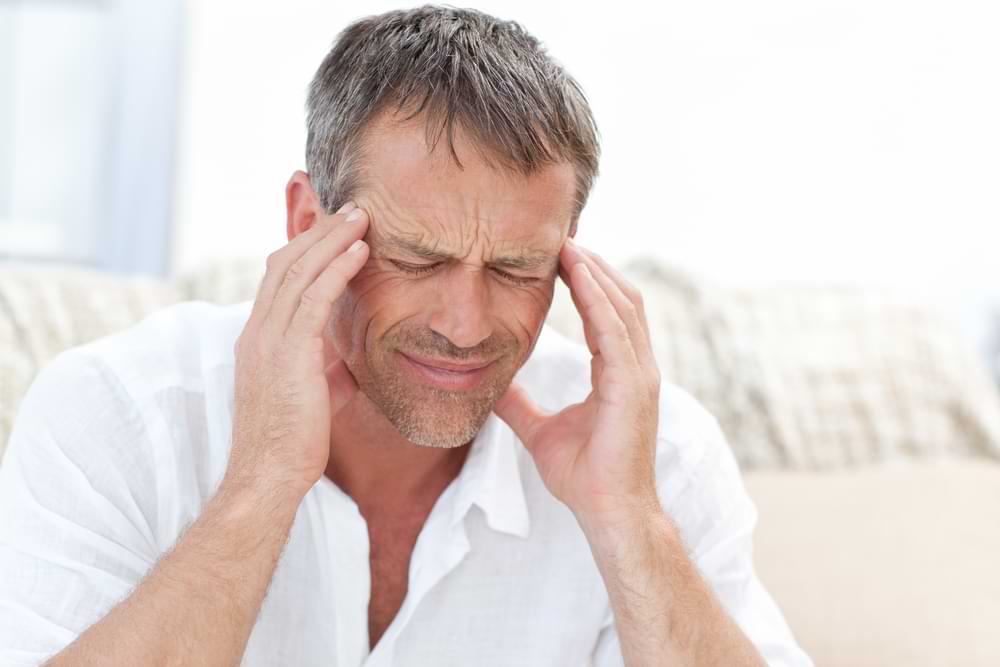Stop Eyestrain Headaches With These Simple Life Hacks
Ever found yourself rubbing your eyes after a long day at the computer screen, feeling a nagging headache coming on?
Many believe that eyestrain headaches are just a part of modern life and unavoidable. However, this isn’t the case. There are effective strategies to prevent and alleviate them.
Eyestrain headaches, also known as Asthenopia, occur when prolonged visual tasks, like reading or staring at screens, lead to “accommodative strain”, as your eye muscles work hard to retain focus. This pain typically manifest in the front part of the head, often affecting the areas around the eyes, the forehead, and temples. The headaches can feel like a dull, aching sensation in these regions, sometimes accompanied by a feeling of pressure.
But it doesn’t need to be this way.
With a few simple lifestyle adjustments and proper eye care, you can be free of visually induced pain and discomfort.
I’m Martin Robinson, the owner and principal optometrist at Martin’s Eyecare in Hobart. With years of experience, I’ve helped countless individuals manage and prevent eyestrain headaches.
Consider a young patient of mine, a graphic designer who came to me with frequent headaches. She thought her glasses were the issue, but it turned out to be her work habits contributing to eyestrain.
Ignoring eyestrain can lead to persistent headaches, affecting your work and overall quality of life. It’s not something to brush off or accept as normal.
If you’re keen on a more personalized approach to tackle eyestrain, book an appointment at Martin’s Eyecare today.
Keep reading to discover some simple life hacks that can make a significant difference.
Common Causes of Eyestrain
Let’s face it, our lives are intertwined with digital screens. From the moment we wake up, we’re checking emails, scrolling through news on our phones, or spending hours in front of a computer at work. This prolonged screen time is a major culprit in causing eyestrain. Our eyes aren’t designed to focus on digital pixels for hours on end, and this intense focus can lead to tired, strained eyes.
But it’s not just the screens themselves; how we use them also matters. Poor ergonomics, like slouching or having the screen at an awkward angle or distance, puts extra strain on our eyes. And let’s not forget about lighting. Ever tried reading on your tablet in a dimly lit room? Or worked at a computer with bright, glaring overhead lights? Both extremes can cause your eyes to work overtime, leading to that all-too-familiar discomfort.
And it’s not just the digital world that’s to blame. Remember those times when you were lost in a good book for hours? Prolonged reading, especially of small print or in poor lighting, can be just as taxing on your eyes. The same goes for other “close work” tasks like sewing or detailed crafting.
Another factor we often overlook is our vision correction. Wearing glasses or contact lenses with an outdated prescription can make your eyes strain to focus, leading to headaches and discomfort. It’s like wearing shoes that don’t fit – not only uncomfortable but also harmful in the long run.
Lastly, let’s talk about environmental glare, especially when driving. Ever noticed how you squint and struggle to see clearly when the sun is glaring off the road or bouncing off other cars? This kind of glare is not just annoying but also a strain on your eyes.
So, what can we do about all these causes of eyestrain? Stick around, as we’ll dive into simple yet effective ways to combat eyestrain and keep your eyes feeling fresh and focused.


Life Hacks to Prevent Eyestrain
Tackling eyestrain doesn’t require drastic changes, just some smart tweaks to your daily habits. Here’s how:
Adjusting Your Digital Habits
- Screen Time Management: It’s all about balance. Try to limit non-essential screen time. Maybe read a physical book instead of browsing on your tablet, or have a face-to-face chat instead of a video call.
- The 20-20-20 Rule: Every 20 minutes, take a 20-second break to look at something 20 feet away. It’s a simple trick to reduce eye fatigue and keep your eyes sharp.
- Activate Dark Mode: By lowering the overall screen brightness and increasing contrast, dark mode can help decrease eye fatigue, especially during extended periods of screen use.
Optimizing Your Workspace
- Proper Lighting Techniques: Use soft, natural light wherever possible. Avoid overly bright or dim lighting. Position your screen to reduce glare, maybe by using a matte screen filter.
- Ergonomic Tips for Computer Use: Keep your screen at eye level, about an arm’s length away. Choose a comfortable chair and desk, and remember to adjust your posture regularly.
Exercises and Relaxation Techniques for Your Eyes
- Palming and Blinking Exercises: Close your eyes and cover them lightly with your palms. No pressure on the eyeballs. Just relax and blink gently. This helps refresh tired eyes. Another method is to warm your hands by rubbing them together and then softly placing the base of your palms over your closed eyelids. The warmth from your hands can help relax and calm overworked eye muscles.
- Focusing Exercises: Hold a pen at arm’s length. Focus on the pen and slowly bring it closer to your nose. Repeat a few times. This helps maintain your eyes’ focusing ability.
Eyewear to Prevent Eyestrain
- Blue Light Glasses: These can be a game-changer, especially if you spend a lot of time in front of screens. They help reduce exposure to blue light, which can mess with your sleep and strain your eyes.
- Sunglasses for Driving and High Glare Environments: When you’re out and about, or behind the wheel, good quality sunglasses can reduce glare and protect your eyes from harmful UV rays.
Nutrition and Hydration
- Vitamins and Minerals for Healthy Eyes: Certain nutrients are like superfoods for your eyes. Vitamins A, C, and E are great for eye health. Think carrots, sweet potatoes, spinach, almonds, and citrus fruits. Omega-3 fatty acids, found in fish like salmon, are also crucial for maintaining healthy retina function. And don’t forget zinc – it’s found in eggs, meat, and legumes and helps with the delivery of vitamin A from the liver to the retina. Remember that the guidance of a professional dietician can be invaluable in tailoring a diet that best supports your specific needs.
- Hydration and Its Role in Preventing Eyestrain: Water is essential for overall health, and your eyes are no exception. Staying hydrated helps maintain the natural tear film of your eyes, preventing dryness and irritation. So, keep that water bottle handy and aim for those 8-10 glasses a day. It’s a simple step, but it makes a big difference.
A few small changes can lead to a big difference in how your eyes feel at the end of the day. If you’d like to learn more tips on how to avoid eyestrain, watch the following video from the Doctor Eye Health channel.
When to Seek Urgent Professional Help:
- Persistent Discomfort: If you’ve tried all the tips and tricks for eyestrain, but the discomfort persists, it’s time to see a professional. Consistent eye fatigue, pain, or headaches shouldn’t be your new normal. These could be signs of underlying conditions that need professional attention.
- Noticeable Change in Vision: Any significant changes in your vision – like blurriness, double vision, or sensitivity to light – warrant a visit to your eye care provider. These changes can indicate various issues, from the need for a prescription update to more serious eye conditions.
While daily habits and lifestyle changes play a significant role in preventing and managing eyestrain, the importance of regular check-ups with your eye care professional cannot be overstated. They’re not just there for when things go wrong; they’re a crucial part of keeping your eyes healthy and your vision clear.
Frequently Asked Questions
How do you make headaches go away?
If you have a migraine, place a cold pack on your forehead. If you have a tension headache, place a heating pad on your neck or the back of your head. Drink plenty of liquids. Dehydration can cause a headache or make one worse.
How long does it take for eye strain headache to go away?
Taking a break from looking at screens will typically help resolve your discomfort within an hour or so.
Does sleep help eye strain?
Yes. Getting adequate sleep plays a crucial part in relieving the eyes from the stress of daily activities like computer work, reading, or being in bright lighting conditions. These activities can lead to considerable eye strain. Additionally, while we sleep, our eyes receive vital nutrients and undergo a cleansing and lubrication process.
Does closing eyes reduce eye strain?
Yes. Taking a brief pause to close your eyes for about 10 seconds can offer immediate relief from strain.
Do I need glasses for eye strain?
Having symptoms of eyestrain doesn’t automatically imply a need for glasses; it could just indicate strain from computer use. However, if you’re constantly squinting to view your screen or frequently experiencing eyestrain, it could be a sign that glasses are needed to improve your vision clarity.
Conclusion
Eyestrain is a common issue, especially in our screen-dominated world. It can arise from prolonged digital screen use, poor workspace ergonomics, inadequate lighting, or even from extended periods of reading or other close-up work. Incorrect vision prescriptions and environmental factors like glare also play a part.
The good news is, there are plenty of ways to prevent and manage eyestrain. Managing screen time, applying the 20-20-20 rule, optimizing your workspace, and doing simple eye exercises can all help. Don’t forget the role of protective eyewear and the importance of a nutrient-rich diet and staying hydrated.
However, it’s crucial to remember that if discomfort persists or if you notice any changes in your vision, it’s time to seek professional help. Regular eye exams are vital not just for updating prescriptions but for catching any underlying issues that could be contributing to your eyestrain.
For the residents of Hobart, if you’re experiencing frequent eyestrain headaches or any eye discomfort, don’t just brush it off. Booking an appointment at Martin’s Eyecare is a step towards ensuring your eye health is in top shape. We’re here not only to help diagnose and treat any eye-related issues but also to offer personalized advice and solutions tailored to your individual needs.
Your vision is precious, and at Martin’s Eyecare, we’re committed to helping you take the best care of it.
